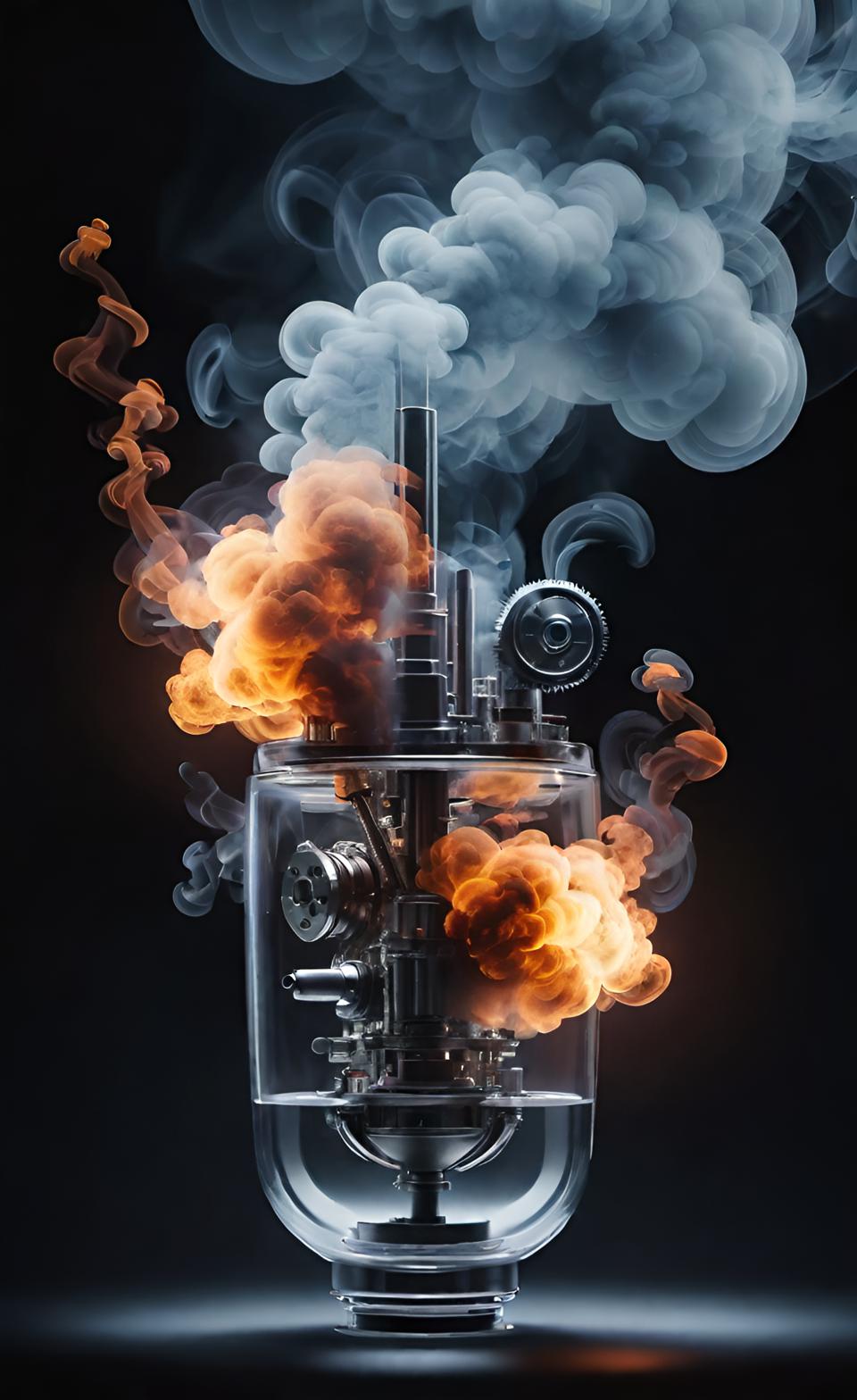- Air Homepage
- Alberta Air Quality
- Air Quality Dispersion Modelling
- Air Quality Particulate Matter
Air Quality Particulate Matter Isn't Just About Size. Get to Know the Science Behind the Numbers.
IN THE FIELD OF AIR QUALITY particulate matter is more than just tiny particles floating in the air. It's a challenge that involves understanding particle size, density, and distribution. Understanding particulate matter requires a dive into particle size distribution, density, and aerodynamics.
There's an invisible threat in the air around your facility. Discover why a single mistake in modelling and reporting can cost your business millions in air quality particulate matter. It's more than size, it's about solutions.
 Bringing cleanliness to the next level
Bringing cleanliness to the next levelAir quality modelling tools like AERMOD and CALPUFF are essential, and they require precise inputs to avoid overestimations. From PM2.5 and PM10 to bigger particles, each affects air quality in its own way.
For instance, veneer dryers might put out a lot of condensable particulate matter, while other types of operations might not. Modelling these emissions requires understanding both the filterable and the condensable portions, because adjusting your data processing can make a big difference. In assessing the full impact of emissions, models don't usually account for secondary particulate formation - chemical reactions occurring downwind. Considering these changes can be crucial.
We care about science; we care about environmental stewardship. Understanding these particles will help us improve air quality and public health in general. We can better protect the environment by understanding the science behind these particles. Key things to consider here are:
- Discover why air quality particulate matter is more than just a measurement-it's a key factor in environmental health.
- Understanding how particulate matter affects the air we breathe and why proper dispersion modelling is critical.
- Explore how mastering particulate matter information can lead to better pollution-management strategies.
- Understand particle behavior, from primary emissions to chemical reactions that create and transform particles. See how science and art might converge when it comes to air quality modelling.
- Policy Makers: Understand how this data can be used to help shape environmental regulations and why air quality particulate matter is so important.
- Discover how industries like pulp and paper use air quality models to predict and control this dust and its environmental impact.
- Questions: Why aren't all particles treated equally in environmental assessments? What does that mean for our understanding of pollution?
- Find out how scientists predict the behavior of air pollutants and use the data to revolutionize how we tackle air quality issues.
Lets look at how Canadian agencies instruct us with regard to particulate matter dispersion modelling.
British Columbia air quality particulate matter
Filterable particulate matter (PM2.5 and PM10) must be taken into account, as well as condensable particulate matter (vapors that condense into particles). For some sources, like veneer dryers, this can be a big deal, but not for all sources. Here's how it works:
 Particle density calculations
Particle density calculationsUse corresponding emission rates if available information differentiates between PM10 and PM2.5. Use the total emission rate if filterable and condensable fractions are specified. You can use this emission rate if there's no information about the condensable portion.
With AERMOD and CALPUFF, you can model particulate deposition based on particle sizes, mass fractions, and densities. To avoid overestimating PM2.5 concentrations, Table 3.1 of BC's guideline should be used for deposition calculations instead of CALPUFF's default distribution curves for PM2.5 and PM10. There are size ranges, mean diameters, and standard deviations for various PM categories in this table.
By summing up relevant PM size categories, PM2.5 and PM10 concentrations can be calculated during the post-processing phase, which is where we conduct model output analysis. According to CALPUFF, each particle should be assigned a density of 1 g/cm3, but this may not apply in all cases, so refer to Table 2.6.2 in the Newfoundland Guidelines for other alternatives.
Alberta Air quality modelling guideline - Particle size distributions
You can use measured data or manufacturer specs to estimate particulate emissions' size distribution. I'll present a quick breakdown:
In the case of PM2.5: Put together the masses of particles with mean diameters of 0.625 μm, 0.875 μm, 1.125 μm, and 1.875 μm. To estimate PM10, the PM2.5 mass is added to the masses of particles with mean diameters of 4.25 and 8 µm. If you have particles bigger than PM10, the statistical bin of particles with a mean diameter of 20 µm represent these.
 Mighty fine particulate matter
Mighty fine particulate matterBy using this method, you can estimate the distribution of air quality particulate matter from stacks, piles, or roads. Understanding the aerodynamic characteristics of emitted particles facilitates increased accuracy in your air quality modelling.
It's crucial to understand particle size distributions when modelling emissions from pulp and paper plants for instance. In stack surveys, Total Suspended Particulate (TSP) is usually measured, which contains particles ranging from smaller-than 2.5 m (PM2.5), smaller than 10 m (PM10), or larger than 10 m (> PM10).
Modelling the impact of these particulates requires first determining the particle size distribution and then the aerodynamic properties of the particles.
Imagine a source that emits 10 g/s of TSP, with empirical ratios of PM2.5 /TSP = 0.560 and PM10 /TSP = 0.737 determined for this industry, and presented in the Alberta Air Emissions Inventory Report - Quantification Methodology Document guidance. Here's how you set up AERMOD and CALPUFF:
The AERMOD method is: Calculate the mass fraction for particulate modeling using a table that includes mean particle diameter, mass fraction, particle density, and mass emission rate for each PM species (P1-P7).
When using CALPUFF, TSP can be modelled by summing PM species at each receptor in CALPUFF. For each PM species (P1-P7), make a table with the size ranges, mean diameter, geometric sigma, and associated mass bins. AERMOD and CALPUFF assume a particle density of 1 g/cm3, which should only be changed if the source particle density is known to differ significantly. A non-default density should be noted in the assessment.
The dust settles sometimes in Saskatchewan
Particulate emissions from stacks are caused by three main processes:
Particles are emitted directly from the stack as solids or liquids. As gases cool down to ambient temperature after exiting the stack, they can condense into particles. Gases from the stack can react with other gases or water vapor downwind to form secondary fine particles.
 Secrets of particulate emissions
Secrets of particulate emissionsIn stack testing, only particulates from direct emission are measured, and though they include both filterable and condensable particles, it's sometimes only the filterable part that's measured. Some sources, like veneer dryers, can have much larger condensable portions than filterable portions, so examining the filterable portion alone would lead you to grossly underestimate the total PM.
For modelling, it's important to know if condensable PM2.5 was included. The condensable portion of PM2.5 may need to be adjusted if only filterable PM2.5 was sampled. Similar stack sampling data or emission estimates from elsewhere can provide data needed to support this adjustment.
Most models don't account for secondary particulate emissions. However, in some cases, like acid deposition or fine particulate impacts, it's important to assess them. For assessments of secondary particulates, CALPUFF is recommended because of the chemical reactions involved in this transformation.
Let Calvin Consulting handle your particulate modelling
Calvin Consulting Group Ltd. knows air quality dispersion modelling is more than just a technical requirement, it's critical for protecting the environment and complying with regulations. We've got you covered...whether you're looking for operational approvals or emergency preparedness. Whether you are are concerned with air quality particulate matter or gaseous substances.
Our team of highly experienced meteorologists and dispersion modellers has over 85 years of combined experience. We don't just crunch numbers, we help you with more of the nuances of your operations and air dispersion. With the AERMOD or CALPUFF models, we provide accurate, reliable results using large meteorological datasets.
What makes us different? Besides consulting, we have a history as trusted trainers for staff at organizations like Alberta Environment and Protected Area (AEPA) and Environment Canada. With our deep industry knowledge, we deliver assessments that meet regulatory requirements. And we do it efficiently.
With Calvin Consulting, you don't just get a service, you get peace of mind that your operations remain compliant with the latest regulations. Reach me at...

Let's talk about how we can simplify your air quality dispersion modeling needs. Let us handle the details so you can focus on running your business.
Clean air is our Passion...Regulatory Compliance is our Business.
Smoke coming out of a factory chimney...
Smoke isn't just smoke; it's made up of tiny, tiny pieces called particles. PM2.5 particles are really small. Others are bigger, and we call them PM10.
Scientists want to know how much of this stuff goes into the air, where it goes, and if it's harmful. They make predictions using special computer programs.
Smoke can change as it mixes with air, so it's tricky. Smoke can even make new tiny particles sometimes. Scientists have to be careful when they make predictions.
The smoke coming out of the chimney is measured, but they also need to know what kind of particles are in the smoke. It helps them predict where the smoke will go and how much people will breathe in.
Do you have concerns about air pollution in your area??
Perhaps modelling air pollution will provide the answers to your question.
That is what I do on a full-time basis. Find out if it is necessary for your project.
Have your Say...
on the StuffintheAir facebook page
Other topics listed in these guides:
The Stuff-in-the-Air Site Map
And,
Thank you to my research and writing assistants, ChatGPT and WordTune, as well as Wombo and others for the images.
OpenAI's large-scale language generation model (and others provided by Google and Meta), helped generate this text. As soon as draft language is generated, the author reviews, edits, and revises it to their own liking and is responsible for the content.


New! Comments
Do you like what you see here? Please let us know in the box below.